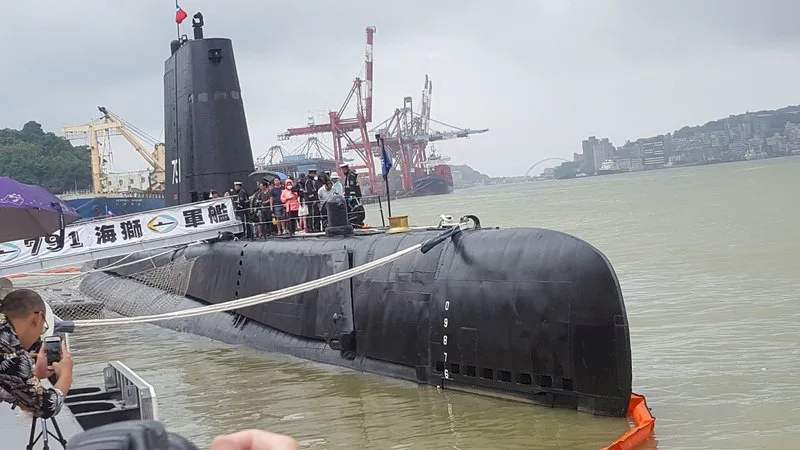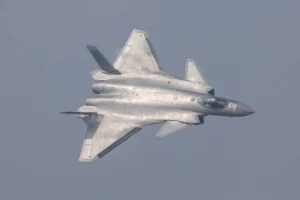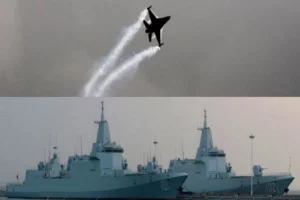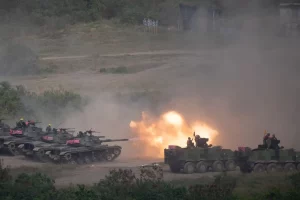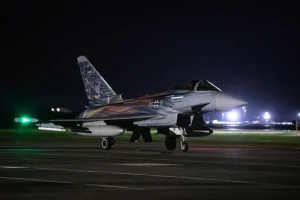Taiwan is rushing on its submarine project, with its first indigenously produced submarine to be launched in September 2023. The tiny island nation, barely 180 kms away from its imposing neighbour China, already nurtures a fleet of four old submarines.
Taipei has been nervous after the Russian attack on Ukraine in February this year, and with China routinely threatening Taiwan with an invasion, the democracy sits uneasy across the Taiwan Strait. It has been ramping up its defensive capabilities in case of an invasion and has been training its citizens in protecting themselves in case of an attack.
During the current tensions, which exacerbated considerably after US Speaker Nancy Pelosi's visit, China had deployed its stealth submarines around Taiwan, besides conducting the high-volume live-fire exercises.
China deploys its most advanced stealth submarine bristling with missiles ‘for sinking US aircraft carriers’ near Taiwan https://t.co/U2r06qIB3b
— Miranda C. Bell Reporting NMS15a Felony Crimes (@truthsearch1957) August 15, 2022
Taiwan has been steadily working on boosting its indigenous defence technologies, along with a dedicated focus on building its own submarine. After taking over office in 2016, President Tsai Ing-wen has laid stress on the production of aircraft, submarines and ships. Experts say that if Taiwan is able to put its submarines in the Taiwan Strait, it could be deadly for Chinese naval transport ships.
India Narrative spoke with Probal Dasgupta, Indian Army veteran and author of the book, Watershed 1967: India’s Forgotten Victory Over China, about the significance of a submarine for Taiwan.
Dasgupta says: “Until now, Taiwan has depended on its anti-aircraft and missile systems to defend against Chinese attack. However, their current defence systems do not lower the risks of blockade by China. So, we evaluate China’s ability to attack the mainland. It is important to note that China might impose blockades or threaten faraway islands. In that scenario, Taiwan would need to include elements that work as deterrents. Submarines could be a part of that plan”.
He adds that submarines could be used in conjunction with other external support to keep the Sea Lines of Communication (SLOC) open and delay Chinese attacks on isolated islands such as Kinmen and Matsu and also play a disruptive role against China aircraft carriers.
Dasgupta also points that “the Nancy Pelosi visit will have a longer impact than visible” as countries such as Japan might be willing to openly assist Taiwan.
The National Interest says that with the high visibility and detection of both aircraft and ships, China is unlikely to mount an attack on Taiwan considering US deployments in the region. It suggests that submarines and undersea drones, which have become quieter now, could most possibly be "in position to attack and destroy advancing Chinese amphibious forces".
It is already known that various American experts have been lending a helping hand to Taiwan in the manufacture of its indigenous submarine, besides helping the Taiwanese military prepare for a Chinese attack.
Taiwan News reported on Thursday that Michael Thim, a Prague-based researcher from think tank Association for International Affairs, said that Taiwan's indigenous defence submarine programme is necessary because even if submarines cannot prevent an invasion, they constitute a strong deterrent. He added that besides US experts, Taiwan should also seek help from Japanese military experts as Japan has good submarines.
Former US deputy undersecretary, Seth Cropsey also suggested that Japan could play a bigger role. He said that Japan can hand over its retired submarines to Taiwan. Croposy said that for defending Taiwan, a coordinated action mechanism of the Japanese, the US and Taiwan commanders is very important.
It is believed that submarines from the US and Japan have a presence in Taiwanese waters, but this has not been made public by the governments of any of the three allies.
Two of Taiwan's submarines are rather old as these hail from World War II while the other two were imported from the Netherlands in the 1980s. Even though the submarines have seen upgrades and can cause damage to the enemy, these do not pose a deterrent effect.
China, on the other hand, is already a formidable global naval force with more than 60 conventional submarines which it can use in multiple ways against Taiwan. Besides, it has an enormous fishing militia fleet that has been active in the disputed waters around south-east Asia.
Read More: South Korea to launch indigenous submarine with ballistic missile capability
Are the drums of war beating once again for Taiwan's remote islands?






